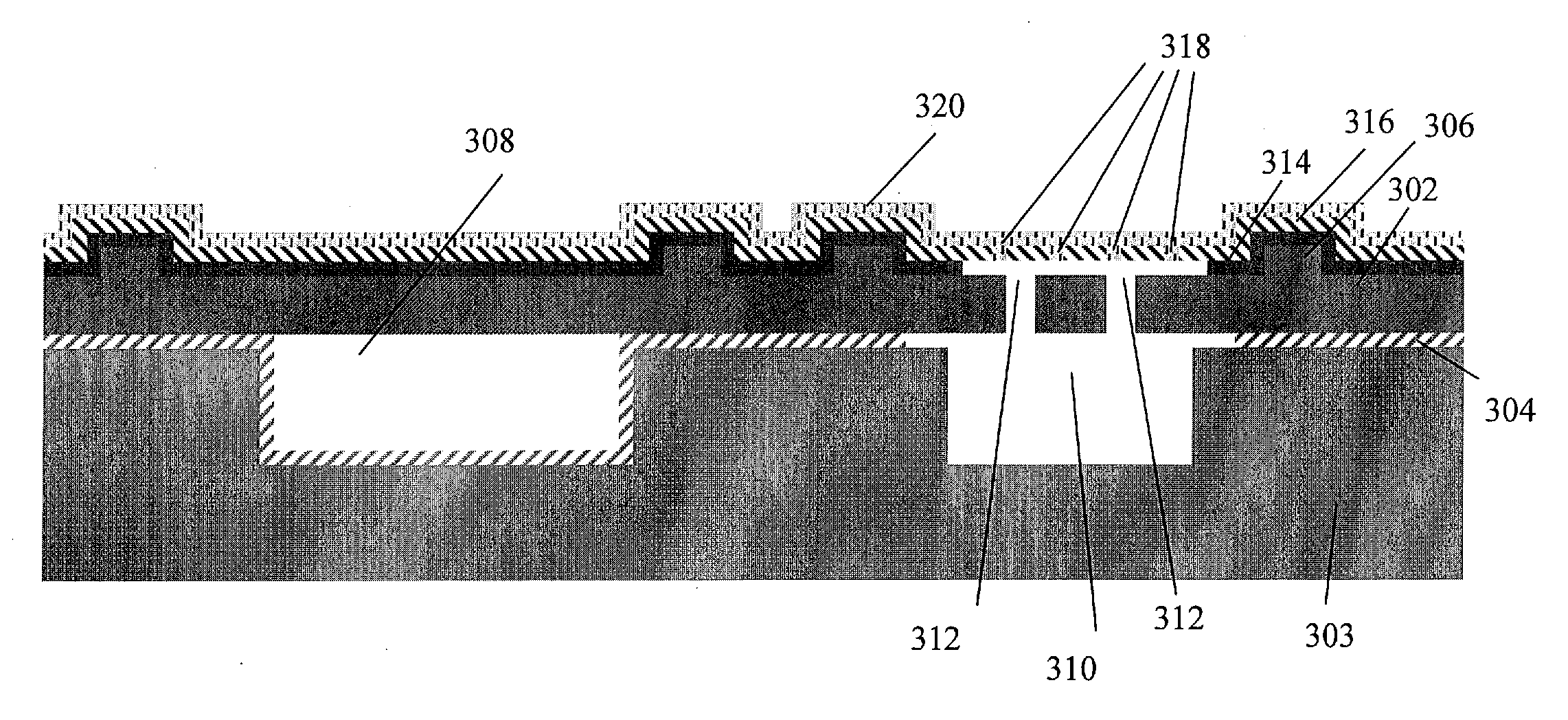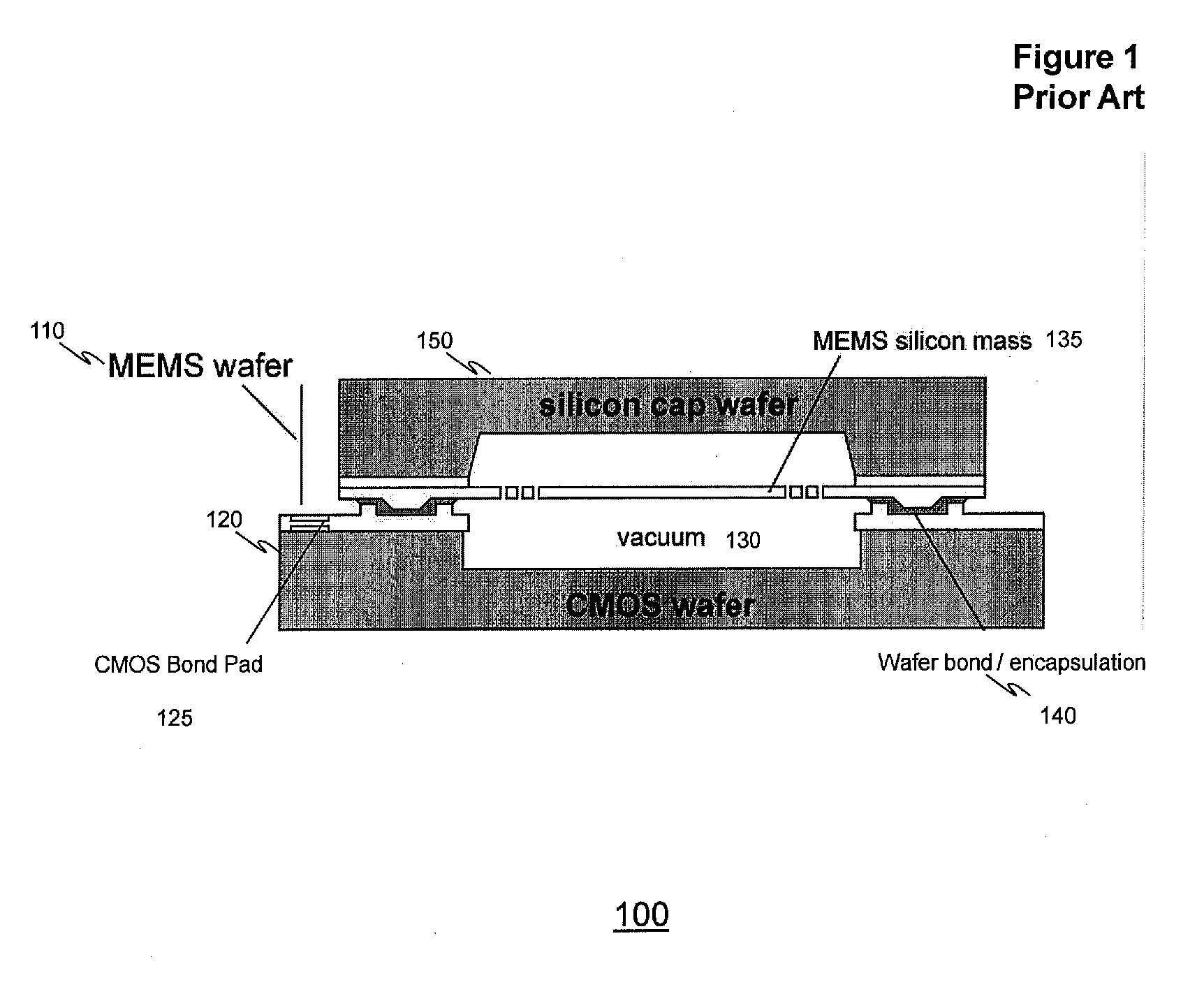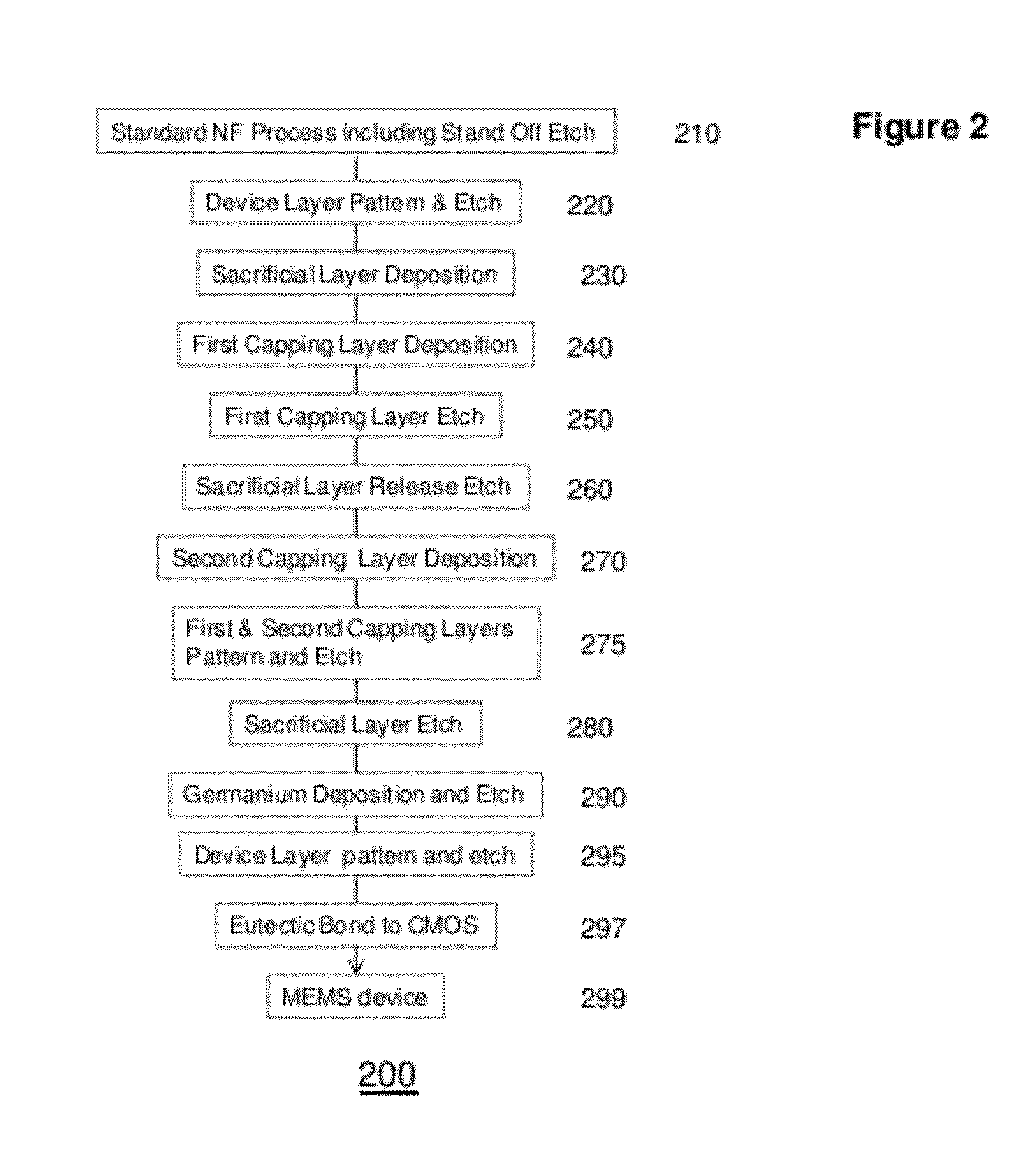Methods for cmos-mems integrated devices with multiple sealed cavities maintained at various pressures
a technology of cmos and mems, applied in the field of mems devices, can solve problems such as failure to overcome challenges, and achieve the effect of greater flexibility
- Summary
- Abstract
- Description
- Claims
- Application Information
AI Technical Summary
Benefits of technology
Problems solved by technology
Method used
Image
Examples
Embodiment Construction
[0059]The present invention relates generally to the fabrication of MEMS devices, and more particularly to providing for two or more cavities with different pressures, or requiring different ambient gasses for operation, on the same chip involving a wafer bonding technique. The present invention provides for multiple approaches and methods for creating multiple pressure levels in multiple cavities fabricated on the chip by a process such as an NF process.
Approach Comparisons
[0060]The present invention relates generally to MEMS devices and more particularly relates to MEMS devices that are hermetically sealed. Presented are four methods, which are described below and include: A. Secondary sealed enclosure, B. Multiple ambient enclosures created during wafer bonding (with four approaches), C. Internal gas reservoir, and D. Controlled leak / breach (with three approaches). Table 1 presents a generalized summary of the advantages of each method and approach.
TABLE 1Comparison of several ap...
PUM
 Login to View More
Login to View More Abstract
Description
Claims
Application Information
 Login to View More
Login to View More - R&D
- Intellectual Property
- Life Sciences
- Materials
- Tech Scout
- Unparalleled Data Quality
- Higher Quality Content
- 60% Fewer Hallucinations
Browse by: Latest US Patents, China's latest patents, Technical Efficacy Thesaurus, Application Domain, Technology Topic, Popular Technical Reports.
© 2025 PatSnap. All rights reserved.Legal|Privacy policy|Modern Slavery Act Transparency Statement|Sitemap|About US| Contact US: help@patsnap.com



